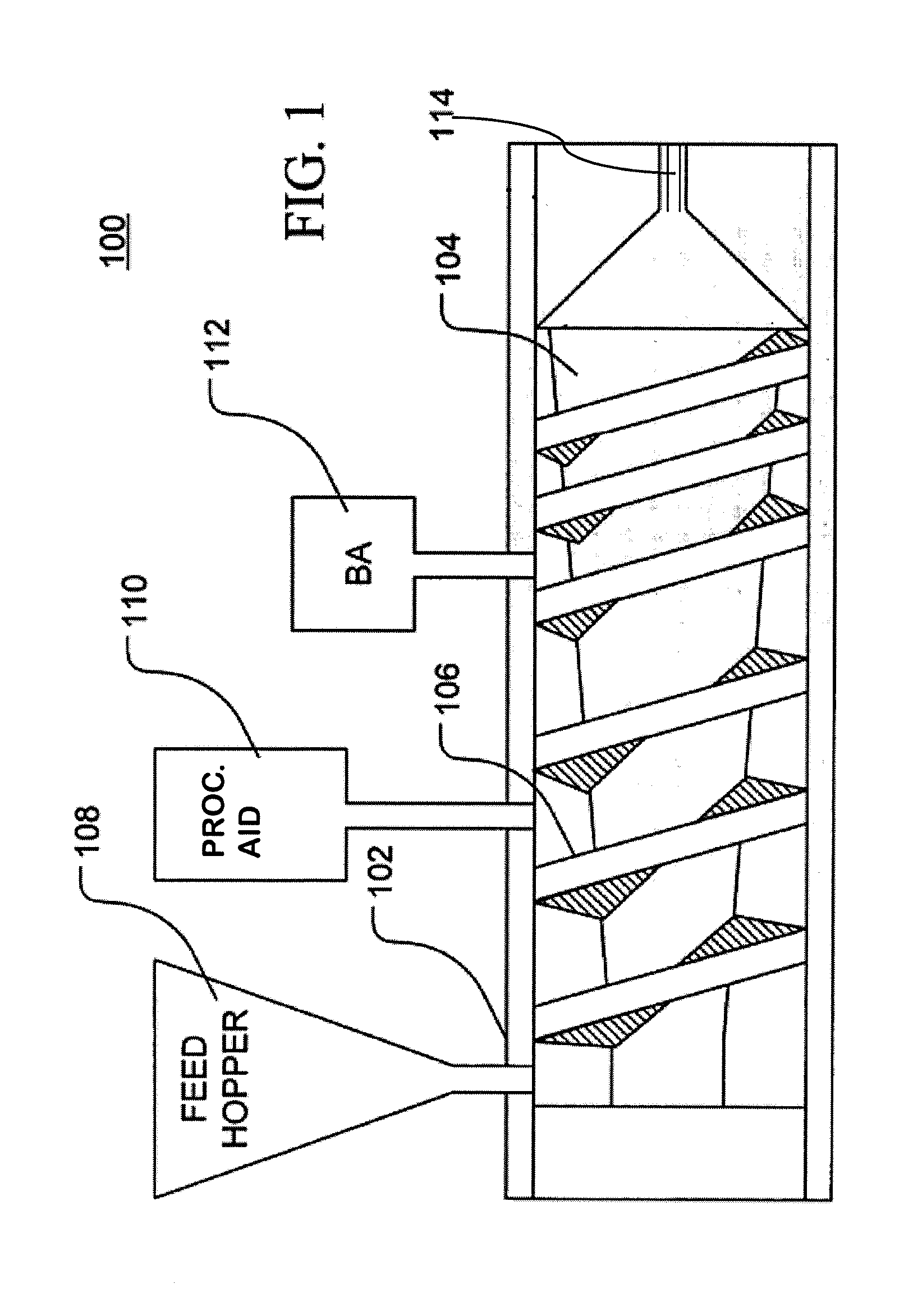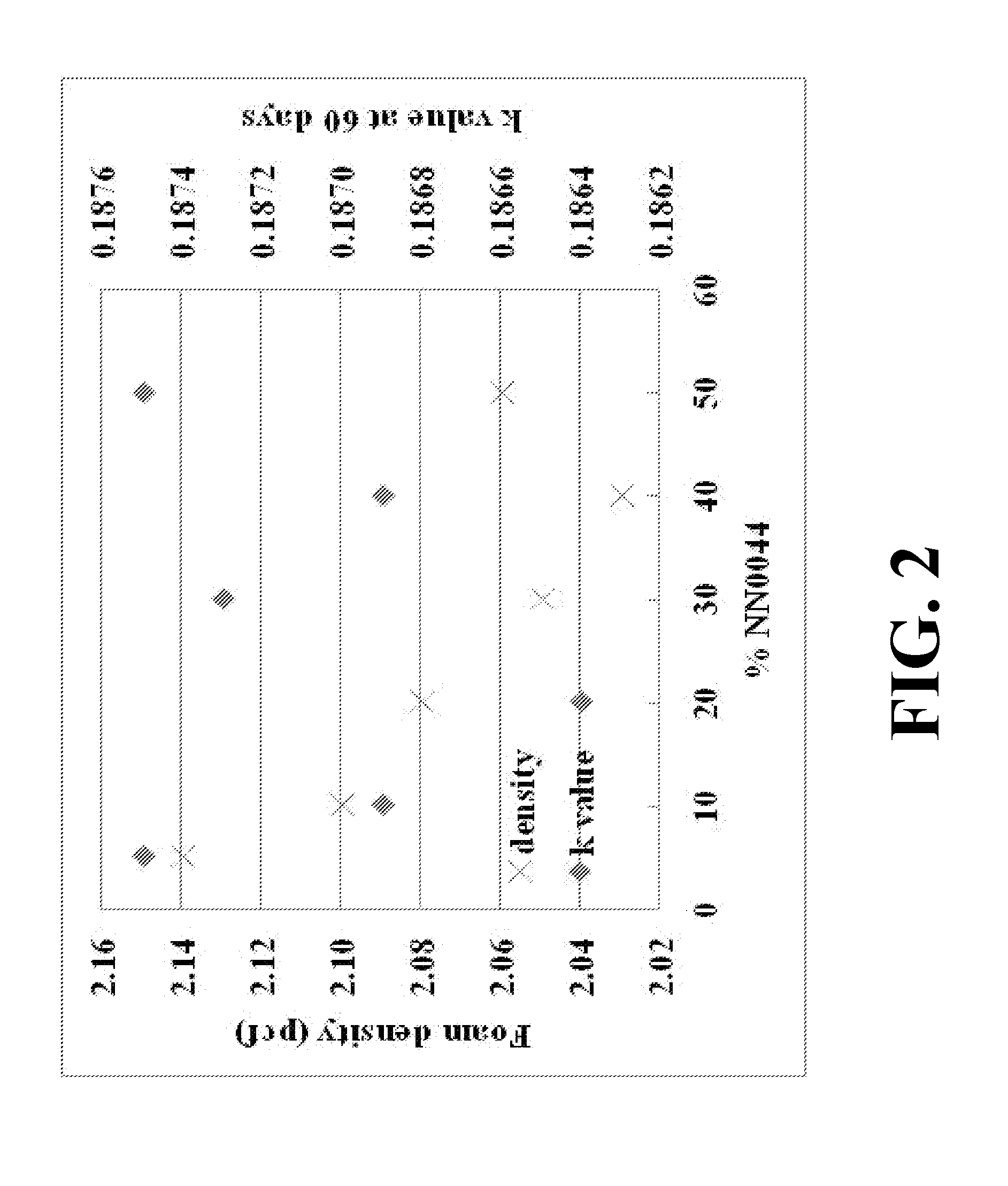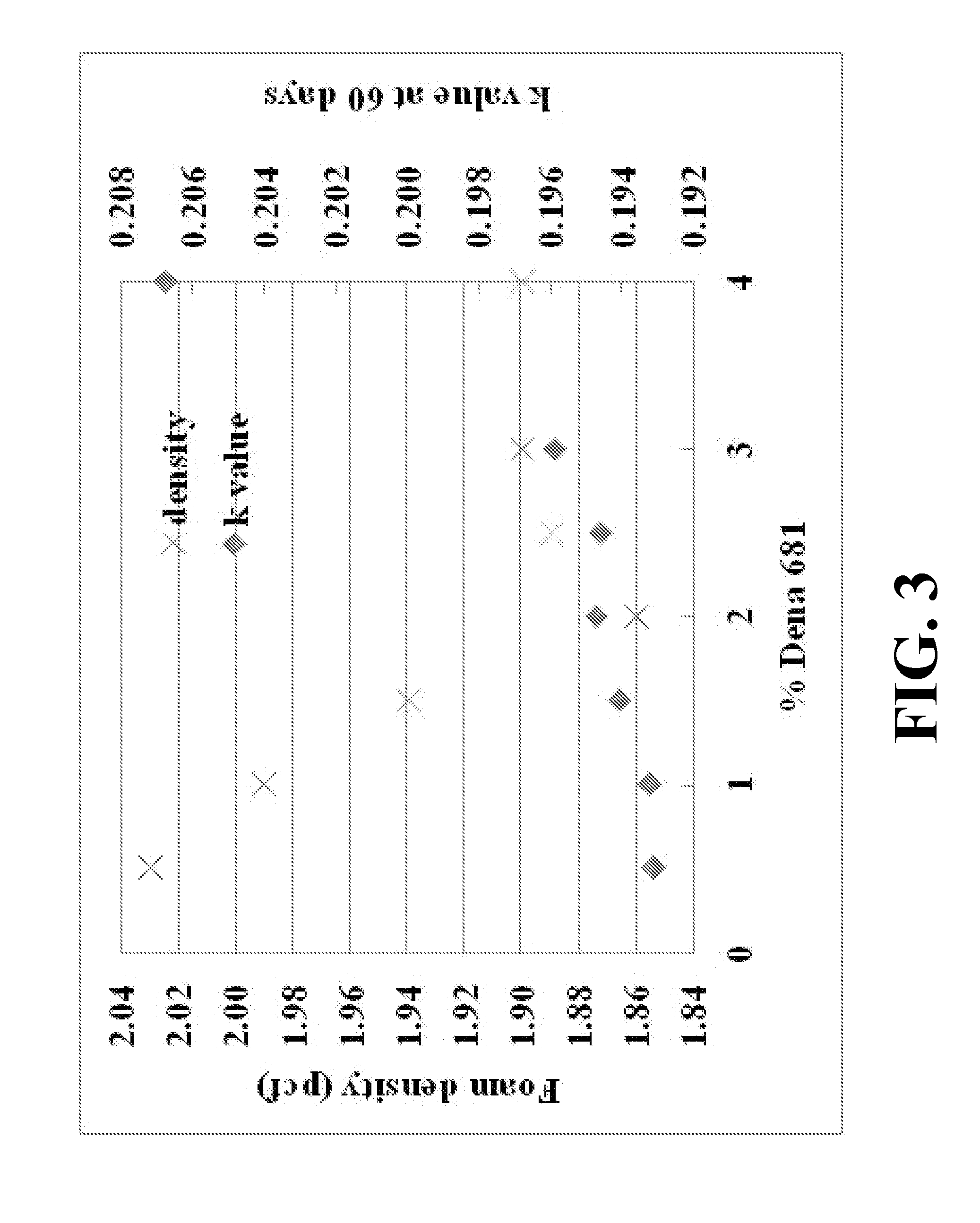Non-voc processing aids for use in manufacturing foams using low global warming potential blowing agents
- Summary
- Abstract
- Description
- Claims
- Application Information
AI Technical Summary
Benefits of technology
Problems solved by technology
Method used
Image
Examples
example 1
[0068]XPS foam was prepared using a twin screw extruder. Polystyrene was melted in the extruder and then mixed with an injected HFO blowing agent to form a homogeneous solution. The HFO blowing agent was included in various amounts, both with and without the addition of a processing aid. The solution was then cooled to the right foaming conditions, including a die temperature between 110 and 130° C. and foaming die pressure between 800 and 1100 psi. Table 1, below, lists the properties of the resulting polystyrene foam. As shown in Table 1, XPS foam produced using an HFO blowing agent without a processing aid demonstrated very small cell sizes (3.5 pcf). However, the inclusion of an adipate ester processing aid produced a foam with an acceptable density (3.0 pcf) and an average cell size of around 0.2 mm.
TABLE 1XPS foam from HFOs + CO2 with and without processing aidsShapingHFO-HFO-DenaCellk value*DieDiePlate1234ze1233zdCO2681 / PluronicsizeDensityat 60PressureTemp.Temp.(%)(%)(%)F108 ...
example 2
[0070]Foam samples were prepared as described in Example 1, incorporating a blowing agent comprising a combination of 5.04 weight percent HFO-1234ze, 0.27 weight percent HFO-1233zd, and 1.25 weight percent CO2 (based upon the total weight of the foamable polymeric mixture). Different processing aids were evaluated at similar extrusion processing conditions. The resulting foam properties are illustrated below in Table 2.
TABLE 2Examples of XPS foams with different processing aids% of processingk valueSampleProcessing aidsaidsCell size (mm)Density (pcf)at 60 daysX5styrene-methyl100.182.100.187methacrylate copolymerL8Dena 109 (adipate ester)10 (1% active)0.192.000.19110% masterbatchs6Dena 109 (adipate ester)30 (3% active)0.201.930.19410% masterbatchb2Dena 109 (adipate ester)1.50.192.000.196liquidb8Dena 109 (adipate ester)1.5 / 0.750.191.920.199liquid / Pluronic F108powderE6Dena 681(octyl 2 / 0.750.191.870.197benzoate) / Pluronic F108powderD4Dena 681 (octyl20.191.860.195benzoate)G6Propylene Car...
example 3
[0071]Foam samples were prepared as described in Example 1, incorporating a blowing agent comprising a combination of 5.04% by weight HFO-1234ze, 0.27% by weight HFO-1233zd, and 1.25% by weight CO2 (based upon the total weight of the foamable polymeric mixture). The foams were produced with similar densities of about 1.85 to 1.90 pcf. Each of the samples also included a different processing aid.
[0072]Comparative Examples 1-3 were prepared using HFO only without any processing aid. Table 2, below, illustrates the cell morphologies, such as cell size, cell orientation, cell wall thickness, and cell strut size for each of the resulting XPS foams.
TABLE 3Cell morphology and foam properties with densities between 1.85 and 1.90 pcf.CellCellCell wallCell strutk valueCompressiveProcessingsizeOrient.thicknesssizeat 120strengthDensitySampleaids(mm)(X / Z)(microns)(microns)days(psi)(pcf)Comp. 1None0.081.01.03.00.182123.9~4.0Comp. 2none0.071.00.81.90.178115.9~4.0Comp. 3none0.070.750.72.00.179105.1...
PUM
| Property | Measurement | Unit |
|---|---|---|
| Fraction | aaaaa | aaaaa |
| Percent by mass | aaaaa | aaaaa |
| Percent by mass | aaaaa | aaaaa |
Abstract
Description
Claims
Application Information
 Login to View More
Login to View More - R&D
- Intellectual Property
- Life Sciences
- Materials
- Tech Scout
- Unparalleled Data Quality
- Higher Quality Content
- 60% Fewer Hallucinations
Browse by: Latest US Patents, China's latest patents, Technical Efficacy Thesaurus, Application Domain, Technology Topic, Popular Technical Reports.
© 2025 PatSnap. All rights reserved.Legal|Privacy policy|Modern Slavery Act Transparency Statement|Sitemap|About US| Contact US: help@patsnap.com



